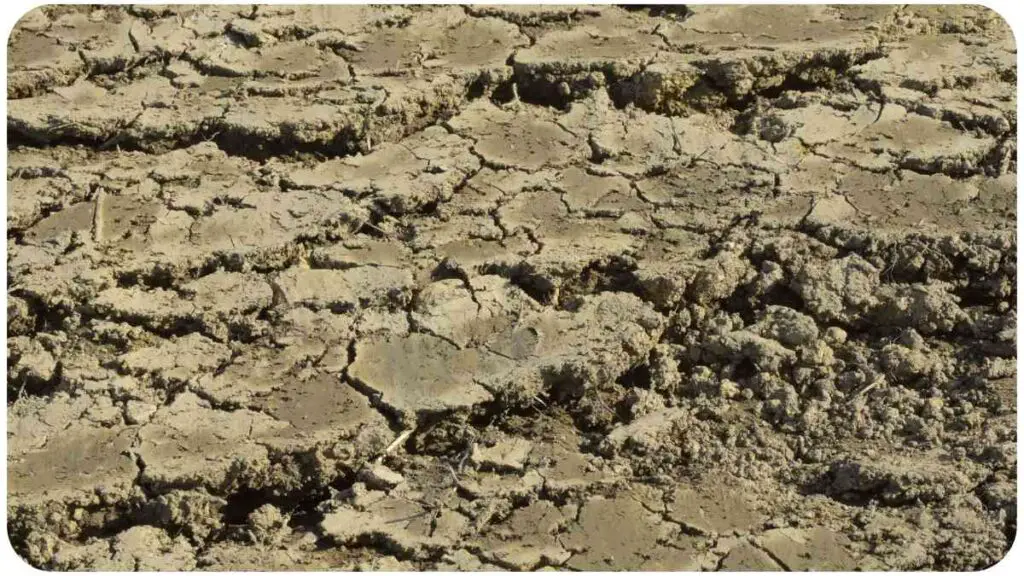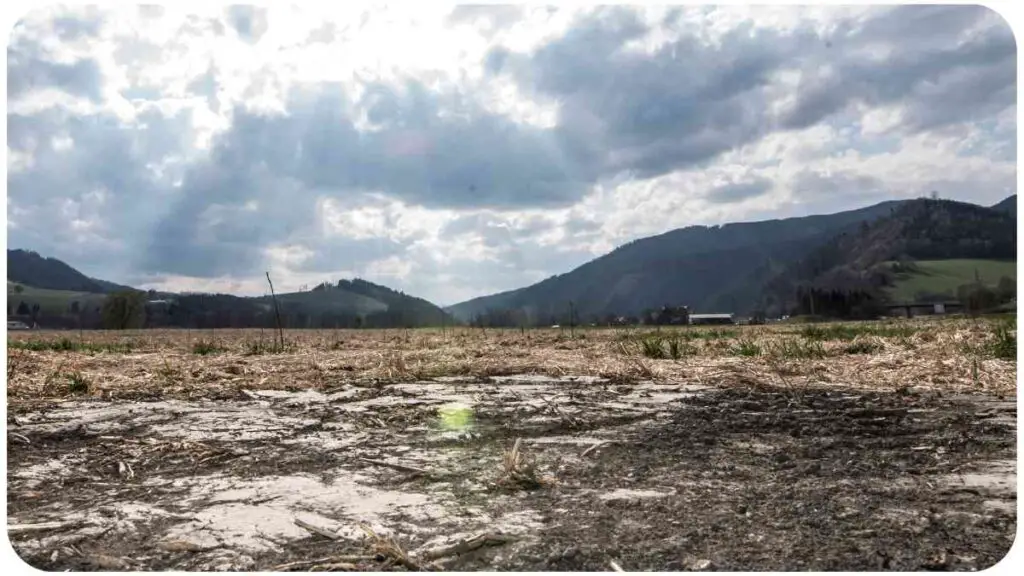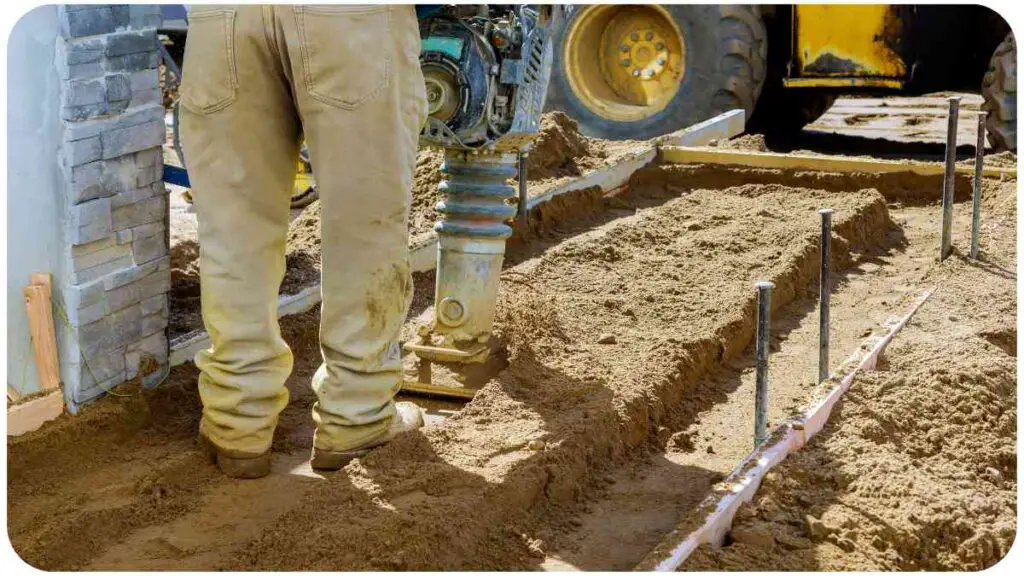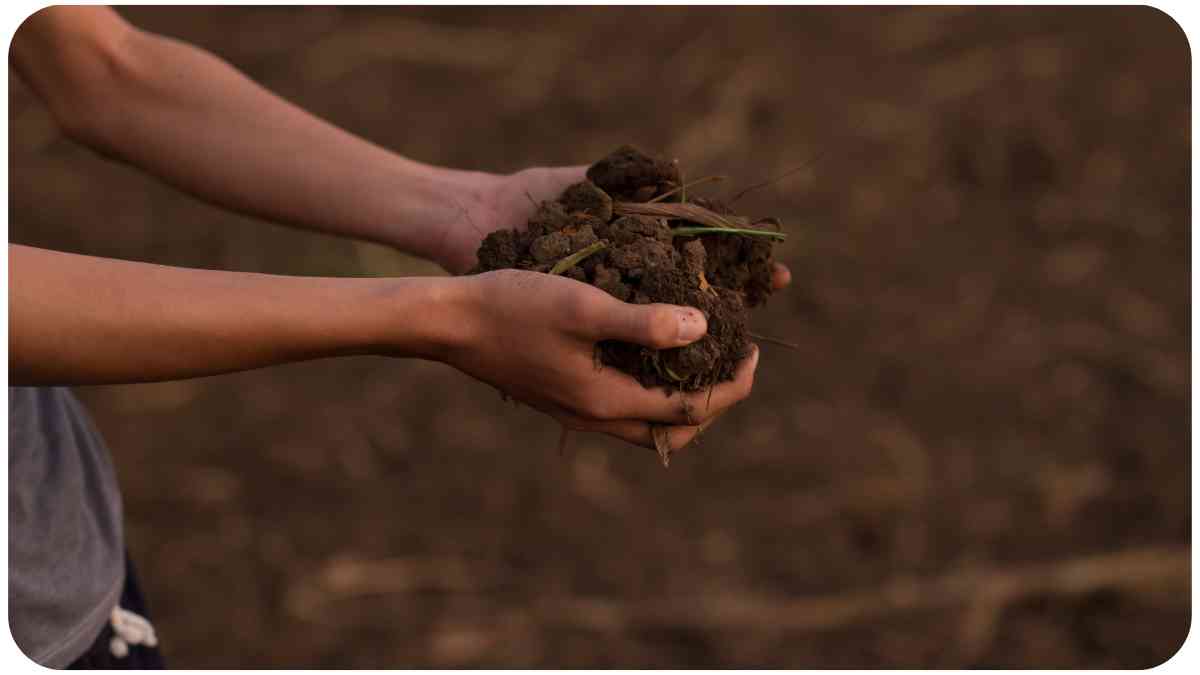When it comes to cultivating a thriving garden or a productive farm, the health of the soil is paramount. One common challenge that many growers face is soil compaction. In this guide, we will explore the intricacies of dealing with soil compaction and provide actionable tips for promoting better plant growth.
| Takeaways |
|---|
| 1. Soil compaction restricts root growth and nutrient absorption, impacting plant health. |
| 2. Regular soil testing is essential for targeted soil management and effective rehabilitation. |
| 3. Implement a holistic approach, combining aeration, cover cropping, and organic matter addition. |
| 4. Deep-rooted and drought-tolerant plants are suitable for compacted soil conditions. |
| 5. Prevention through path planning, mulching, and mindful watering is crucial for long-term soil health. |
| 6. Real-life case studies and expert insights provide valuable guidance for successful soil management. |
| 7. Avoid common mistakes like neglecting soil testing and relying solely on mechanical solutions. |
| 8. Stay adaptable, observe your unique soil conditions, and enjoy the journey to healthier plant growth. |
2. Understanding Soil Compaction
Soil compaction occurs when soil particles are compressed, reducing pore space and limiting the movement of air, water, and nutrients within the soil. This can create a hostile environment for plant roots and hinder their development.
Soil health is paramount for plants. A robust guide on fungal disease treatment ensures your garden thrives. Learn to spot, treat, and prevent fungal issues for flourishing plants.
3. Signs of Soil Compaction

Before diving into solutions, it’s crucial to identify the signs of soil compaction. Common indicators include stunted plant growth, water runoff, and difficulty in inserting tools or roots into the soil.
Table 1: Signs of Soil Compaction
| Sign | Description |
|---|---|
| Stunted Growth | Limited plant height and reduced foliage. |
| Water Runoff | Water pooling on the surface instead of soaking in. |
| Difficulty in Penetration | Tools or roots encountering resistance in the soil. |
4. Consequences of Soil Compaction
Understanding the consequences of soil compaction is essential for devising effective solutions. Let’s delve into the impact on root growth and the limitations it imposes on water and nutrient movement.
A tranquil garden requires a well-maintained DIY fountain. Discover essential tips to ensure your fountain flows with clarity, enhancing the aesthetic appeal and serenity of your outdoor space.
4.1 Impact on Root Growth
Soil compaction restricts root penetration, inhibiting the development of a healthy root system. This limitation hampers the plant’s ability to access nutrients and water, leading to suboptimal growth.
4.2 Water and Nutrient Limitations
Compacted soil hinders water infiltration and nutrient absorption by roots. This results in poor water retention and nutrient deficiency, affecting the overall health and productivity of plants.
Table 2: Consequences of Soil Compaction
| Consequence | Description |
|---|---|
| Restricted Root Growth | Inhibited development of a healthy root system. |
| Poor Water Infiltration | Reduced water absorption due to compacted soil. |
| Nutrient Deficiency | Inability of plants to access essential nutrients. |
5. Causes of Soil Compaction

Understanding the causes of soil compaction is crucial for implementing effective prevention and rehabilitation strategies. Let’s explore the various factors that contribute to soil compaction.
Optimal drainage is vital for a healthy garden. Explore solutions for common drainage issues that may hinder plant growth. Implement these fixes to promote better water circulation and prevent waterlogged soil.
5.1 Heavy Machinery
Frequent use of heavy machinery, such as tractors and construction equipment, can exert immense pressure on the soil, leading to compaction. The repeated compaction from machinery can create a hardened soil layer, restricting root growth.
5.2 Foot Traffic
Even in home gardens, excessive foot traffic can contribute to soil compaction. The constant pressure from walking or standing on the soil compacts the ground, especially in high-traffic areas.
5.3 Clayey Soil
Clayey soils are more prone to compaction due to their fine particle size and ability to hold water. When clay particles become compacted, they form a dense layer that impedes water drainage and root penetration.
Healthy soil is the foundation of a thriving garden. Uncover essential tips and techniques for rejuvenating garden soil. Learn how to enhance soil structure, nutrient content, and overall fertility for robust plant growth.
5.4 Natural Settling
Over time, soil naturally settles, and this settling process can contribute to compaction. It’s essential to monitor and address any settling issues promptly.
6. Soil Compaction Testing
Before implementing solutions, it’s crucial to assess the extent of soil compaction. Several testing methods can help determine the level of compaction.
6.1 Penetrometer Testing
Using a soil penetrometer, measure the resistance of the soil to penetration. Higher resistance indicates compacted soil. Perform tests at different depths to identify the compaction layer.
6.2 Visual Inspection
Inspect the soil for signs of compaction, such as the presence of a hard layer, stunted plant growth, or water runoff. Visual cues can provide valuable insights into the condition of the soil.
Guard your garden against pests with effective tips and tricks. From identifying common pests to implementing natural deterrents, this guide empowers you to protect your plants and maintain a pest-free, flourishing garden.
7. How to Improve Soil Structure
Once soil compaction is identified, it’s time to explore effective strategies to enhance soil structure and promote better plant growth.
7.1 Aeration Techniques
Aeration involves creating channels in the soil to improve air and water movement. Methods include core aeration and spiking, which alleviate compaction and enhance soil porosity.
7.2 Cover Crops
Introducing cover crops, such as legumes or grasses, can help break up compacted soil. The roots of cover crops penetrate the soil, creating channels and improving overall soil structure.
7.3 Organic Matter Addition
Incorporating organic matter, such as compost or well-rotted manure, enhances soil structure. Organic matter improves water retention, nutrient availability, and the overall resilience of the soil.
Table 3: Soil Improvement Techniques
| Technique | Description |
|---|---|
| Aeration | Creating channels to improve air and water movement. |
| Cover Crops | Introducing plants to break up compacted soil. |
| Organic Matter Addition | Enhancing soil structure with compost or manure. |
8. Selecting Plants for Compacted Soil
Choosing the right plants for compacted soil is crucial for ensuring successful growth despite soil challenges.
8.1 Deep-Rooted Plants
Opt for plants with deep root systems that can penetrate compacted layers and access nutrients and water. Examples include taproot vegetables like carrots and deep-rooted perennials.
8.2 Drought-Tolerant Varieties
Select plants that are resilient to drought conditions. Drought-tolerant varieties can withstand periods of limited water availability, which is common in compacted soils.
Table 4: Plants for Compacted Soil
| Plant Type | Examples |
|---|---|
| Deep-Rooted Plants | Carrots, sunflowers, deep-rooted perennials. |
| Drought-Tolerant Varieties | Lavender, sedum, yarrow. |
9. Preventing Soil Compaction

Prevention is key to managing soil compaction in the long term. Implementing proactive measures can significantly reduce the risk of compaction.
9.1 Path Planning
Designate specific paths for walking or using machinery to avoid compacting essential growing areas. Well-planned paths can minimize soil disturbance.
9.2 Mulching
Apply mulch to the soil surface to protect it from compaction caused by rain or foot traffic. Mulch also helps retain moisture and regulates soil temperature.
9.3 Avoiding Overwatering
Excessive watering can contribute to soil compaction. Ensure proper irrigation practices, allowing the soil to dry out between watering to maintain optimal porosity.
Table 5: Soil Compaction Prevention
| Prevention Measure | Description |
|---|---|
| Path Planning | Designating specific paths to minimize soil disturbance. |
| Mulching | Applying a protective layer to prevent compaction. |
| Avoiding Overwatering | Regulating water application to prevent excess moisture. |
In the next part, we will explore real-life case studies of successful soil rehabilitation and gather insights from experts in the field.
10. Case Studies: Successful Soil Rehabilitation
Real-world examples provide valuable insights into the effectiveness of soil rehabilitation techniques. Let’s explore a couple of case studies where growers successfully dealt with soil compaction.
10.1 Case Study: Farm XYZ
Farm XYZ faced severe soil compaction due to years of heavy machinery use. The farmer implemented a comprehensive soil rehabilitation plan, including deep aeration and cover cropping. The introduction of radishes as cover crops significantly improved soil structure by breaking up compacted layers. Subsequent crops displayed healthier growth, and yield increased by 20%.
Table 6: Case Study Results – Farm XYZ
| Rehabilitation Technique | Impact on Soil | Yield Increase |
|---|---|---|
| Deep Aeration | Improved air and water movement in the soil. | – |
| Cover Cropping (Radishes) | Breakup of compacted soil layers. | 20% Increase |
10.2 Case Study: Community Garden
In a community garden with high foot traffic, soil compaction was a persistent issue. The gardeners implemented a path planning strategy, creating designated walkways to minimize soil disturbance. Mulching was also employed to protect the soil from additional compaction caused by rainfall. The results were promising, with visibly improved soil structure and healthier plant growth.
Table 7: Case Study Results – Community Garden
| Prevention Measures | Impact on Soil | Plant Health Improvement |
|---|---|---|
| Path Planning | Minimized soil disturbance in growing areas. | – |
| Mulching | Protected soil from compaction due to rainfall. | Improved overall health. |
11. Expert Tips for Dealing with Soil Compaction
To gain further insights, let’s turn to experts in the field who have successfully navigated soil compaction challenges.
11.1 Expert Insight: Dr. Sarah Green, Soil Scientist
Dr. Sarah Green emphasizes the importance of regular soil testing. “Understanding the specific characteristics of your soil allows for targeted interventions. Conducting tests for compaction levels and nutrient content guides the rehabilitation process.”
11.2 Expert Insight: John Gardner, Agricultural Engineer
John Gardner recommends a multi-pronged approach. “Combining aeration techniques, strategic cover cropping, and consistent organic matter additions is key. It’s about creating a holistic environment that fosters healthy soil biology.”
In the following sections, we’ll explore common mistakes in soil compaction management and conclude with a summary of key takeaways for dealing with this pervasive issue.
12. Common Mistakes in Soil Compaction Management
Avoiding pitfalls in soil compaction management is crucial for achieving successful results. Let’s examine some common mistakes that growers may encounter.
12.1 Neglecting Regular Soil Testing
One common mistake is neglecting to conduct regular soil tests. Without understanding the current state of the soil, it’s challenging to implement targeted and effective rehabilitation strategies.
12.2 Overlooking the Importance of Mulching
Some growers may underestimate the benefits of mulching. Failure to apply mulch can leave the soil vulnerable to compaction caused by rainfall and other environmental factors.
12.3 Relying Solely on Mechanical Solutions
While aeration equipment can be beneficial, relying solely on mechanical solutions without considering cover cropping and organic matter additions may limit the effectiveness of the rehabilitation process.
Table 8: Common Mistakes in Soil Compaction Management
| Mistake | Impact on Soil Rehabilitation |
|---|---|
| Neglecting Regular Soil Testing | Limits the ability to implement targeted strategies. |
| Overlooking the Importance of Mulching | Leaves soil vulnerable to compaction from environmental factors. |
| Relying Solely on Mechanical Solutions | May not address the root causes of soil compaction comprehensively. |
13. Conclusion
Dealing with soil compaction is a nuanced challenge that requires a multi-faceted approach. From understanding the signs and causes to implementing effective rehabilitation and prevention strategies, growers can navigate this obstacle successfully.
By learning from real-life case studies and gaining insights from experts in the field, you are better equipped to make informed decisions about soil compaction management. Avoiding common mistakes ensures a more successful and sustainable journey toward healthier, more productive soil.
Remember, each soil is unique, and a tailored approach based on regular testing and observation will yield the best results. As you embark on the journey to better soil health, stay curious, adapt your strategies, and enjoy the rewarding experience of fostering thriving plant growth.
Further Reading
- University of Nebraska-Lincoln Extension: Soil Compaction Management Guide
Explore this comprehensive guide from the University of Nebraska-Lincoln Extension, providing in-depth information on soil compaction management. Learn practical strategies and tips to enhance soil structure for better plant growth. - MasterClass: Soil Compaction Guide
MasterClass offers a succinct guide on soil compaction, covering the basics and advanced concepts. Delve into this resource for expert insights and practical advice from professionals in the field. - University of Delaware Cooperative Extension: Combating Soil Compaction Fact Sheets
The University of Delaware Cooperative Extension provides fact sheets on combating soil compaction. Access valuable information, tips, and recommended practices to address and prevent soil compaction issues in various settings.
FAQs
How does soil compaction affect plant growth?
Soil compaction restricts root growth and limits the availability of water and nutrients, hindering overall plant development.
What are the common signs of soil compaction?
Stunted plant growth, water runoff, and difficulty in tool penetration are common indicators of soil compaction.
Can soil compaction be prevented?
Yes, preventive measures such as path planning, mulching, and avoiding overwatering can significantly reduce the risk of soil compaction.
How can I test for soil compaction on my property?
Methods such as penetrometer testing and visual inspection help assess the level of soil compaction and identify compacted layers.
Are there plants that thrive in compacted soil?
Plants with deep root systems, like carrots and deep-rooted perennials, can thrive in compacted soil by penetrating the dense layers to access nutrients and water.

Hi! My name is Hellen James, and I’m here to help you with your home-maintenance needs. Whether it’s building a better yard or just trying to fix a garden—I can show you how.


